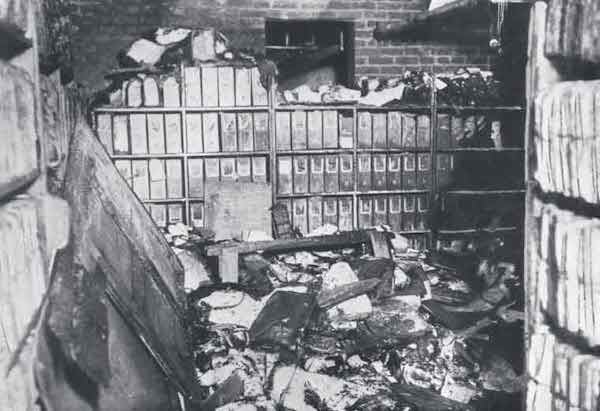Experienced American genealogists all “know” that the 1890 U.S. census is unavailable as it was destroyed in a fire in 1921. Sure, everyone “knows” that because it has been repeated time and again in print ever since. Unfortunately, that statement is not entirely accurate.

Some years ago, I wrote a Plus Edition article entitled, “The 1890 U.S. Census: Not Everything Was Destroyed.” Since then, I have found that even more records from the 1890 U.S. census are available today.
To be sure, this is a small snippet of the available information: a list of black farmers in Delaware. Nonetheless, it is an excellent example of how presumed “public knowledge” can be inaccurate.
After the taking of the Twelfth Census in 1900, the Census Office published a variety of statistical reports based upon data collected in that and previous censuses. In 1901, Le Grand Powers was the Chief Statistician for Agriculture. In September 1901, Mr. Powers or clerks under his supervision drafted proposed Census Bulletin No. 100 on Agriculture in the State of Delaware, published September 30, 1901. It appears that, a few days before publication of this Bulletin, someone within the Census Bureau disagreed with or questioned the conclusions reached about "Negro" farmers. As a result, a search was undertaken to locate all African American ("Negro") farmers in the Twelfth Census of the United States (1900) for Delaware, and then to locate as many of them as possible in the Eleventh Census of the United States (1890) for Delaware.
Keep in mind these government employees of 1901 had access to the original 1890 census records since those records did not get destroyed until the fire twenty years later. While only about 25 per cent of the records were destroyed in the fire, the remaining records were damaged, either by heat or by water, and were soon decaying in the non-air conditioned storage facility in later months. (Keep in mind that air conditioning was almost non-existent in 1921, the date of the fire.) Most of the remaining original records were destroyed at a later date. This makes the surviving snippets of information extracted before the fire so valuable.
On December 28, 1901, the Chief of the Geographer's Division summarized the search results in a letter to Professor Walter F. Willcox, another chief statistician for the 1900 census. Of the 818 "Negro" farmers in Delaware in 1900, the Bureau was able to locate 454 in the 1890 Delaware population and agricultural schedules. The Geographer retained these lists in his files, which were accessioned into the National Archives and Records Administration (NARA) decades later.
The NARA Microfilm Publication M1919 List of Selected African Americans from the 1890 and 1900 Federal Population Censuses of Delaware and Related Census Publications "Agriculture in the State of Delaware" (1901) and "Negroes in the United States" (1904) (1 roll) reproduces lists of selected African Americans from the 1890 and 1900 censuses of Delaware that are part of the Records of the Bureau of the Census, Record Group (RG) 29. In addition, selected Bureau of the Census publications relating to this subject matter have been reproduced from the Publications of the U.S. Government, RG 287.
A few unburned records from the original 1890 census were discovered in 1942 and still others in 1953. These had not been destroyed as ordered. These fragments, containing some 6,160 names from Alabama, Georgia, Illinois, Minnesota, New Jersey, New York, North Carolina, Ohio, South Dakota, Texas, and the District of Columbia, have been reproduced as National Archives Microfilm Publication M407, Eleventh Census of the United States, 1890 (3 rolls), and are indexed by National Archives Microfilm Publication M496, Index to the Eleventh Census of the United States, 1890 (2 rolls). For more information, see Kellee Blake, "First in the Path of the Firemen": The Fate of the 1890 Population Census, Prologue: Quarterly of the National Archives and Records Administration, Vol. 28, No. 1 (Spring 1996): 64-81, Part 1 and Part 2.
These microfilms are available directly from the National Archives and can also be rented for a modest fee at a local LDS Family History Center near you.
You can read a lot more about these topics on the National Archives and Records Agency’s web site at:"1890 Census" at: https://www.archives.gov/research/census/1890. It lists:
(1) General population census schedules
(2) Schedules of Union Civil War Veterans or their widows
(3) Oklahoma territorial schedules
(4) List of selected Delaware African-Americans,
(5) Statistics of Lutheran congregations
(6) Statistical information for the entire United States
 Latest News Articles
Latest News Articles If you do not see a Plus Sign that is labeled "Add comment," you will need to upgrade to either a (FREE) Standard Edition or a (paid) Plus Edition subscription
If you do not see a Plus Sign that is labeled "Add comment," you will need to upgrade to either a (FREE) Standard Edition or a (paid) Plus Edition subscription